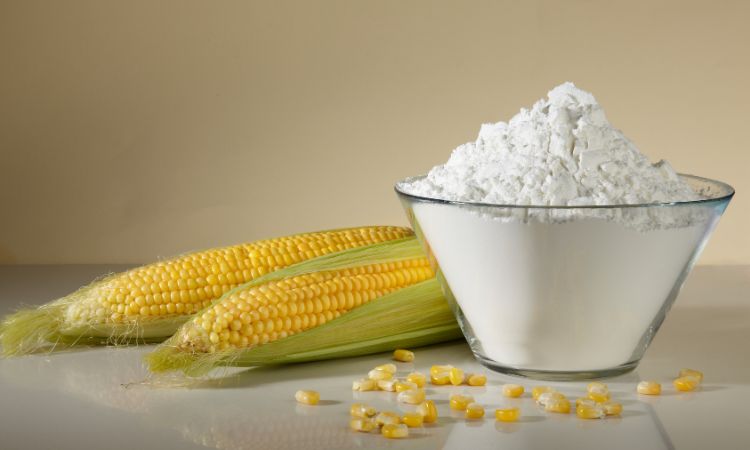The global corn starch market size reached a volume of approximately 87.15 million tons in 2023. The market is expected to witness further growth in the forecast period of 2024-2032, growing at a CAGR of 2.7%, and is estimated to reach a volume of 110.77 million tons by 2032. This steady growth underscores the increasing relevance of corn starch in a variety of industries, from food and beverages to pharmaceuticals and textiles. In this blog post, we will delve into the market’s dynamics, segmentation, regional analysis, competitive landscape, and key trends that are shaping its future.
Understanding Corn Starch
Corn starch, derived from the endosperm of corn kernels, is a versatile carbohydrate used in a myriad of applications. It serves as a thickening agent in cooking, a stabilizer in various food products, and a critical component in manufacturing processes across several industries. Its unique properties make it a favored choice for businesses looking to enhance the quality and performance of their products.
Market Segmentation
The corn starch market can be segmented based on type and application, providing valuable insights into its diverse uses.
By Type
- Native Starch
- Native starch is unmodified corn starch, known for its natural properties. It is widely used in food applications, offering thickening and gelling capabilities. The demand for native starch is fueled by consumer preferences for clean-label products, which do not contain additives or artificial ingredients.
- Modified Starch
- Modified starch undergoes physical or chemical processing to alter its properties. This type of starch is prevalent in the food industry for its enhanced functional characteristics, such as improved viscosity and stability. Applications in sauces, dressings, and bakery products are common, and the market for modified starch is anticipated to grow significantly.
- Sweeteners
- Corn-derived sweeteners, including high fructose corn syrup, play a critical role in the food and beverage sector. These sweeteners are increasingly popular due to their affordability and versatility, further driving market growth.
By Application
- Food and Beverages
- The food and beverage industry represents the largest segment of the corn starch market. As consumers seek convenience and quality, the demand for corn starch in processed foods is on the rise. Products such as instant noodles, soups, and desserts often rely on corn starch for texture and stability.
- Animal Feed
- Corn starch is also an important component in animal nutrition. Its digestibility and energy content make it an attractive feed ingredient for livestock, supporting the growth of this segment as the global demand for animal protein increases.
- Pharmaceuticals and Chemicals
- In the pharmaceutical industry, corn starch serves as a binding agent and filler in tablet formulation. Its role in drug manufacturing is crucial, particularly as the industry leans toward natural ingredients.
- Textiles
- Corn starch is used in the textile industry as a sizing agent. It helps improve the stiffness and finish of fabrics, contributing to the overall quality of textile products.
- Paper and Corrugates
- The paper industry utilizes corn starch as a coating and adhesive, enhancing the strength and durability of paper products. As the demand for sustainable packaging solutions rises, the role of corn starch in corrugates is becoming increasingly important.
Regional Analysis
The corn starch market is geographically diverse, with key regions including North America, Europe, Asia-Pacific, Latin America, and the Middle East & Africa.
- North America is the largest market for corn starch, driven by its extensive agricultural base and the presence of leading manufacturers. The demand for clean-label products in the food sector is expected to propel market growth further.
- Europe follows closely, with a growing focus on health-conscious food products. The trend toward gluten-free options has increased the use of corn starch in various applications.
- Asia-Pacific is projected to witness the highest growth rate during the forecast period. Rapid urbanization, increasing disposable incomes, and changing dietary patterns contribute to the burgeoning demand for corn starch in this region.
- Latin America and the Middle East & Africa are emerging markets, with increasing agricultural activities and a rise in food processing industries.
Market Dynamics
Drivers
Several factors are driving the growth of the corn starch market:
- Rising Demand for Convenience Foods: As lifestyles become busier, consumers are gravitating toward ready-to-eat meals and processed foods, driving the demand for corn starch.
- Innovations in Starch Processing: Technological advancements in starch modification techniques are creating new applications, expanding the market further.
- Health Trends: With a shift toward healthier eating habits, corn starch’s natural origins and versatile uses in gluten-free and low-fat products are becoming increasingly appealing.
Restraints
Despite the positive growth outlook, the market faces challenges:
- Competition from Alternatives: Alternative starch sources, such as tapioca and potato starch, pose a threat to corn starch market share.
- Regulatory Challenges: Stricter regulations surrounding food safety and ingredient transparency may impact market dynamics.
Opportunities
- Emerging Markets: Developing countries present significant growth opportunities as urbanization and income levels rise.
- Sustainability Trends: The increasing emphasis on sustainable practices offers corn starch a chance to shine, particularly in biodegradable packaging applications.
Competitive Landscape
The corn starch market is characterized by a mix of established players and emerging companies. Key players include Archer Daniels Midland Company, Cargill, Ingredion, and Roquette Frères, among others. These companies are focusing on strategic partnerships, acquisitions, and product innovation to enhance their market presence.
Recent developments include investments in research and development to create sustainable and high-performance starch solutions, which are expected to drive competitive advantage in the coming years.
Key Trends and Developments
- Focus on Sustainability: The industry is witnessing a shift toward sustainable sourcing and production methods, aligning with global sustainability goals.
- Health-Conscious Products: The rise of health and wellness trends is pushing manufacturers to explore natural and clean-label corn starch alternatives.
- Technological Innovations: Continuous advancements in starch modification technologies are enabling new applications and improving the functionality of corn starch.
Future Outlook (2024-2032)
The corn starch market is poised for continued growth, with a projected CAGR of 2.7% through 2032. Key factors influencing this trajectory include the ongoing demand for processed foods, the expansion of applications across various sectors, and the growing trend toward sustainability.
As businesses adapt to consumer preferences and technological advancements, the corn starch market will remain a vital component of the global economy, driving innovation and meeting the needs of diverse industries.





